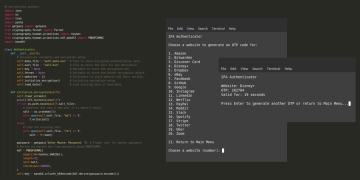As a Software Engineer, I’m often confronted with the necessity of safeguarding users’ sensitive information. One important aspect of user data protection revolves around password hashing. In this article, we’ll discover the significance of hashing passwords, explore the utilization of PHP’s native functions for password hashing and verification, and shed light on the concept of salting to fortify these security measures.
The Perils of Plain Text Passwords
Before we explore the subject of hashing, we need to understand the serious risks that come with keeping passwords in an unencrypted, readable format within your databases. Imagine a frightening situation where a hacker manages to unlawfully access your application’s database. If the passwords are there in plain text, the hacker can quickly and easily get hold of all user login details, possibly leading to a massive security breach that could affect numerous user accounts.
Hashing is a cryptographic method that provides a clever way to avoid this looming danger. It works by applying a one-way function to passwords, creating irreversible, fixed-length strings of characters. This makes it extremely difficult for an attacker to figure out the original password just from its hash. Even if the hash values were to be stolen, anyone trying to decipher the original passwords would encounter significant and formidable obstacles.
The Essence of Hashing and Its Necessity
In the realm of password storage, hashing involves using a carefully crafted one-way function to transform a user’s password into a complex hash. The design of this process ensures that it is completely irreversible, meaning that it’s impossible to figure out the original password from the hash. So, if a hacker manages to access the hashed passwords, they won’t be able to decode them, greatly increasing the system’s security.
One striking feature of the hashing process is its consistent size output. No matter the length of the password, the resulting hash will always be of a fixed size. This uniformity is very useful for database storage and management, making tasks like indexing and retrieval more straightforward, along with space management.
But adding a strong hashing system to your application is not just about protecting user passwords. It also plays a vital role in building trust with your users. When they know their passwords are not stored in an easily readable form, their faith in the security of your platform grows, leading to a more committed and trusting user community.
Employing password_hash and password_verify
PHP is a widely-used server-side scripting language that has a valuable collection of built-in functions. These functions make the complex process of creating secure password hashes and then verifying them much simpler. At the core of these functions are two specific tools: password_hash is used to create password hashes, and password_verify is used to effortlessly and efficiently compare a plain text password with its corresponding hashed version.
Here’s a step-by-step guide to help you understand how to use these functions effectively:
Hashing a Password with password_hash
Creating a secure password hash is easily done with the password_hash function, which uses the bcrypt algorithm by default. This algorithm is well-regarded for its strength and flexibility, making it an excellent choice for password hashing in contemporary software systems. Here’s a simple example that demonstrates this process:
<?php $password = "user123"; $hashedPassword = password_hash($password, PASSWORD_DEFAULT); ?>
The employment of the PASSWORD_DEFAULT constant ensures that the function dynamically selects the most recommended and secure algorithm, effectively streamlining compatibility and bolstering security.
Verifying a Password with password_verify
After creating and saving the hashed password in your database, the user authentication process requires a comparison of the entered password with the stored hashed version. The password_verify function simplifies this complex process by efficiently handling the comparison.
<?php
$passwordFromUser = "user123";
$storedHash = "...";
if (password_verify($passwordFromUser, $storedHash)) {
// Password is correct
} else {
// Password is incorrect
}
?>Elevating Security with Salting
Hashing adds a strong layer of protection to passwords, but an additional method called “salting” can make this security even more robust. Essentially, a salt is a randomly generated value that’s securely attached to a password before it is hashed. This simple but clever addition ensures that even if multiple users have the same password, their hashes will be unique.
Salting is particularly effective against a type of attack known as the rainbow table attack. In this attack, criminals use previously calculated hashes for common passwords to break into systems more quickly. With salting, even when multiple users choose the same password, the generated hashes will be different because of the unique salts. This makes these types of attacks almost impossible to carry out.
Generating a Salt
In the process of salting, a vital initial step is to create a unique salt for every user. This unique salt is then stored securely with the corresponding hashed password. For generating these secure random values, the PHP function random_bytes is a dependable tool.
<?php $salt = random_bytes(16); ?>
In this example, the random_bytes function generates 16 random bytes, creating a salt of considerable complexity. This degree of randomness is essential to ensure that the salt is unpredictable, making it exceptionally challenging for attackers to exploit.
Hashing with the Salt
When hashing the password, combine it with the generated salt before applying the hash function. This step ensures that the salt is intimately tied to the password before hashing. Now you can employ the hash function.
<?php $password = "user123"; $salt = random_bytes(16); $saltedPassword = $salt . $password; $hashedPassword = password_hash($saltedPassword, PASSWORD_DEFAULT); ?>
Verification with the Salt
Verifying salted passwords involves replicating the salting process during the login attempt. The stored salt is retrieved from the database and used to recreate the salted password for comparison. This reenactment ensures that the hash comparison remains secure, even during the verification phase.
<?php
$passwordFromUser = "user123";
// Retrieve the stored salt from the database
$storedSalt = "...";
$saltedPasswordFromUser = $storedSalt . $passwordFromUser;
// Retrieve the stored hash from the database
$storedHash = "...";
if (password_verify($saltedPasswordFromUser, $storedHash)) {
// Password is correct
} else {
// Password is incorrect
}
?>Salting passwords not only reinforces security but also illustrates a commitment to user privacy and data protection.
Conclusion
In the constantly changing world of cybersecurity, secure password hashing is critically important. Modern software engineers recognize this and see it as a proactive approach to security. Storing passwords in plain text can lead to devastating breaches while using hashing to conceal them adds a layer of protection.
Hashing passwords means using cryptographic functions to change them into a form that can’t easily be reversed. This makes passwords safe from those who might try to steal them. Additionally, the consistent way hashing works simplifies managing a database, making it an attractive security method.
For those working with PHP, the native functions password_hash and password_verify make this process even easier. These functions include the best practices for cryptography, so you don’t have to learn complicated methods. This can make your platform more secure, helping to build trust with your users and maintain a loyal user base.
However, security needs to keep evolving to fight new threats. One way to do this is to use “salting” in addition to hashing. By adding a random value known as a “salt” to the password before hashing it, you can make it even more secure. This extra step makes it more difficult for attackers to figure out the original password.
In conclusion, as a software engineer, using secure password hashing techniques is both an ethical and practical responsibility. By including these practices in your work, you do more than just protect user data. You help build a digital environment where users can trust that their information is safe. This contributes to a strong and resilient digital community, where people can confidently use your application, knowing their data is well-protected.
























